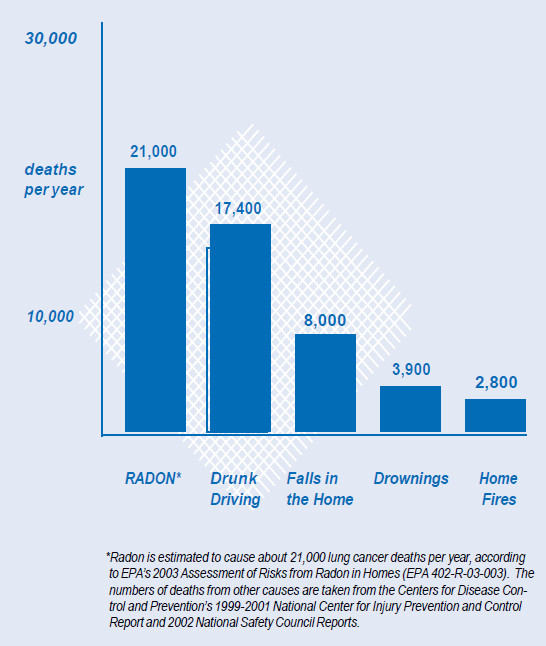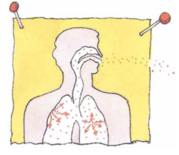Test. Fix. Save a Life!
Protect Your Family from Radon
November is Lung Cancer Awareness Month
What is radon?

Radon is a radioactive gas that you cannot see or smell. It moves up through the ground to the air above and into your home through cracks and other holes in the foundation. Your home then traps the radon inside, where it can build up. Radon can also sometimes enter the home through well water.
Nearly 1 out of every 15 homes in the U.S. is estimated to have elevated radon levels. Elevated levels of radon gas have been found in homes in every U.S. State.
For more information see: A Citizen's Guide to Radon: The Guide to Protecting Yourself and Your Family from Radon.
|
 |
|
Radon gas decays into radioactive particles that can get trapped in your lungs when you breathe. These particles can damage lung tissue and lead to lung cancer over the course of your lifetime. According to EPA estimates, radon is the number one cause of lung cancer among non-smokers and is estimated to cause over 21,000 lung cancer deaths per year.
For more information see our webpage: Health Risk of Radon.
|
What can I do about radon?
Start by testing for radon. It’s quick, easy, inexpensive and you can do it yourself.
The EPA recommends that you should fix your home if your radon level is 4 picocuries per liter (pCi/L) or higher and consider fixing your home if your radon level is between 2 and 4 pCi/L.
If after testing you do find elevated radon levels, you may consider selecting a qualified radon mitigation contractor to reduce the radon levels in your home or determine an appropriate radon reduction method. For more instruction see: EPA’s Consumer’s Guide to Radon Reduction: How to Fix Your Home.
Additional EPA radon resources:
|